Side Gallery
Side Gallery
WishlistFollow







SPRING 2023
CASAVELLS
SIDE GALLERY
APR 8 2023 - JUNE 22. 2023
Casavells is delighted to open it's doors today for the inauguration of the new season. The spring edition of the 2023 exhibition features works form a group of eleven international contemporary designers: Francisco Jaramillo, Elissa Lacoste, Willem van Hooff, Sabine Marcelis, Oliver Sundquist & Frederik Nystrup-Larsen, Marjan Van Aubel, Jonas Lutz, Charlotte Kingsnorth, Johan Viladrich.



The collection on view from 31st March 2023 in our seasonal countryside gallery, seeks to interpret the current status of design, bringing together both up-and. coming and well-established figures, to create a harmonic coexistence between each praxis.
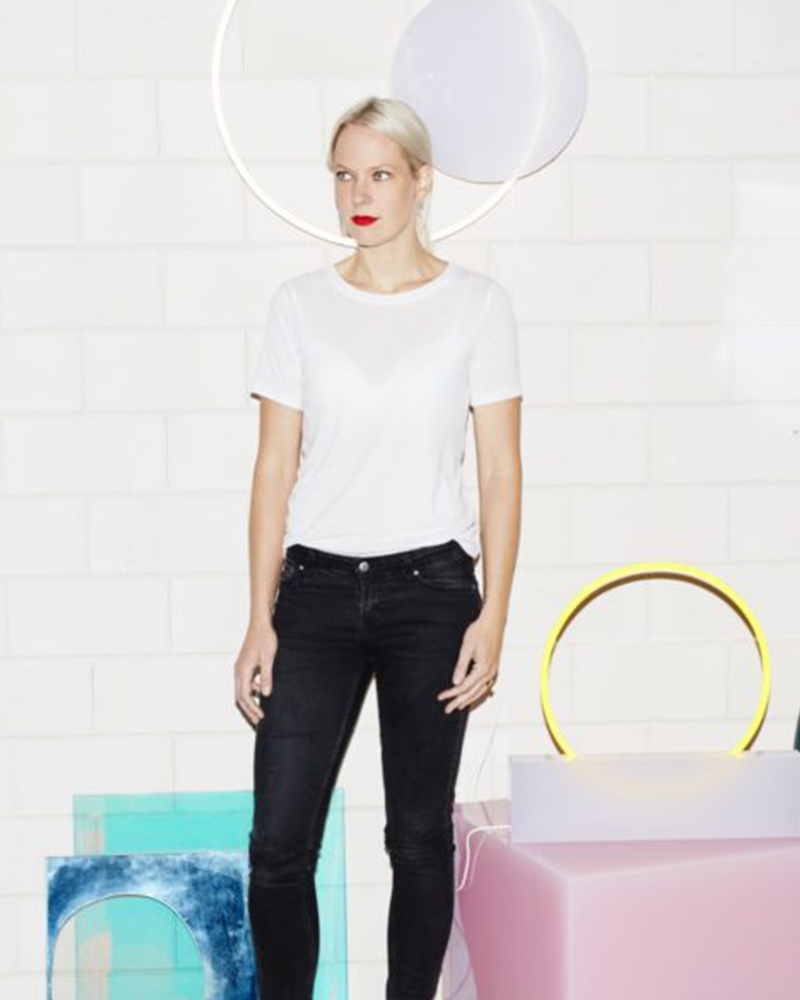
Sabine Marcelis (b.1985 New Zealand) is a designer living and working in Rotterdam, The Netherlands. Raised in New Zealand, she was recognized from a young age for her design abilities, being awarded the New Zealand Young Designer of the Year. Marcelis studied industrial design for two years at Victoria University in Wellington, and continued her studies at the Design Academy Eindhoven, where she graduated in 2011. When graduating the designer was nominated for a fleet of prestigious design grants, such as the ‘Unge Talenter Designpriser’ by the Norsk Designråd, the René Smeets Award, and the Keep an Eye Grant.
Since graduating, she has been operating Studio Sabine Marcelis, working within the fields of product, installation and spatial design with a strong focus on materiality. Her work is characterized by pure forms and natural elements such as the reflections of light and water, which she believes highlight material properties. Growing up in New Zealand Sabine was surrounded by dramatic landscapes, always sensitive to the light of the sky, the ocean and the snow on the mountains, the artist was inspired by the communication of the natural elements. Her work captures these beautiful moments in nature on a smaller scale, as objects or installations.
Over the last decade, the award-winning designer has become known for her work with resin and glass. Her receptiveness for these two materials is due to their manipulability; sharp angular shapes as well as spineless curves can be protracted giving the artist endless scope for form. Moreover, the translucency of the both materials can be adjusted from sheer transparency to milky or solid opaque finishes. Working in collaboration with industry specialists, Marcelis intervenes in the manufacturing processes using material research and experimentation to achieve new and surprising visual effects, applying a strong aesthetic point of you to the material development processes. The series Candy Cubes is an example of the designer’s complex material investigation; a polyester resin mold is used to cast the piece, followed by an intensive polishing process. The cast resin is light sensitive, as sun rays shine down onto the solid blocks, the light illuminates the edges, sugar coating the sides, making the aptly named “marshmallow” colored candy cube appear edible.
As well as playing with natural light, Marcelis also experiments with artificial lighting in her work. The introduction of neon light to her material combinations expresses the relationship between light, color and transparency in a more constant context. In 2015 Marcelis produced the series Dawn Light whereby the introduction of a white neon tube to a series of different geometric resin objects was used to reflect a unique moment in nature; when the sun, clouds and sky all join together, creating a momentary riot of hues. The series was on show at the Museum Boijmans Van Beuningen in Holland. Since then Marcelis has continued to work with neon and resin developing complex colour recipes and finishes, resulting in her Totem Series commissioned and sold exclusively by Side Gallery in 2019. The collection is composed of four different sized lighting elements, two table and two standing lamps. The Totems are built with several stacked translucent resin volumes which are slightly rotated on a central axis. The carved-out void where the neon light is inserted allows for a multifaceted play between the twisted planes of polished resin and light reflections. Every angle of the lights is a unique visual experience.
As well as designing object pieces, the Dutch designer has a series of impressive installation projects associated with her profile including, the Aesop Vedovelle Fountain, the Dutch Pavilion at Cannes Film festival 2017, a Light installation at Biennale Interieur 2018, The Solo Sun Dial project 2018, Burberry x OC in 2018 and De/Coding ‘Alcantara in the tapestry Rooms’ in 2019. Perhaps her most famous installation was her Shapes of Water or Fendi Fountains installation, first exhibited at Design Miami 2018. The ten water sculptures designed from cast resin were a continuation of Marcelis experience and experimentation in material practices, projecting her own vision her elegant avant-garde creativity corresponded directly with the Fendi philosophy.
The designers most prestigious exhibition yet, was her museum show “NO FEAR OF GLASS” in December 2019. The intervention commissioned by Side Gallery in collaboration with the Mies Van de Rohe Foundation, consisted of five original works by the Dutch designer, meticulously placed within the Pavilion. The five pieces were designed to extrude from the architecture itself; two large chaise lounges were pulled up from the ground by extending the travertine floor to form a base, they were sliced with a singular sheet of curved glass which was seemingly pulled from the walls. The two materials met and became sculptural yet functional furniture pieces. Eight chrome columns provide the structural support for the roof of the pavilion. Marcelis introduced a ninth mirrored-glass column which functioned as a light and was placed in line with the structural columns, blending in seamlessly with the architecture, both in form and materiality. In the water pond outside the pavilion, a curved glass fountain could be seen bending the water upwards from the ground, and letting it spill over and back down.
Marcelis won the 2020 Wallpaper Designer of Year Award, her material exploration continues to create surprising applications as her reputations reaches all corners of the world. The designer continues to be represented by Side Gallery where a number of her pieces can be seen, including the series, Voie Lights, Seeing Glass, Filter lights, Totem Lights, Candy Cubes and others.
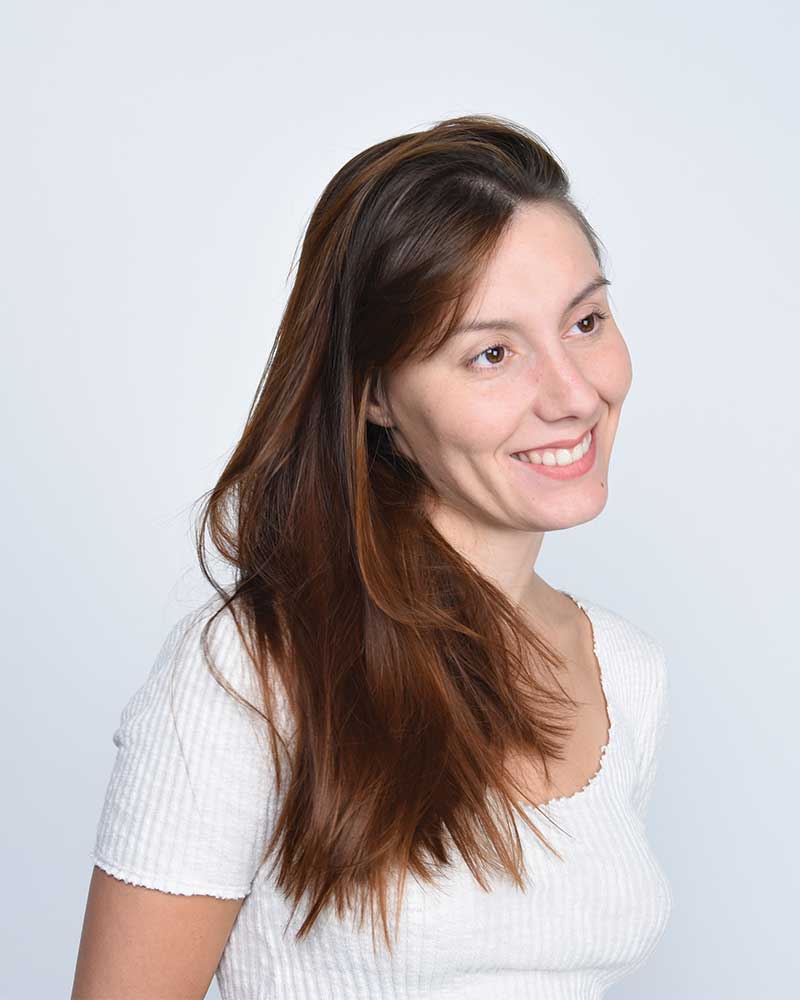
Elissa Lacoste (b. 1994, France) is an experimental designer who lives and works in Burgundy, France. She studied at Ecole Supérieure d’Art et Design Saint-Etienne and Latvian Art Academy in Riga. She obtained her MA at Design Academy Eindhoven in 2018 in the Netherlands.
Hands-on and instinctive, her work stems from her quest for the wild, the inexplicable and the sensorial within contemporary boundaries. Unconventionally textured and vibrant, her sculptural pieces linger between the real and the surreal while maintaining a hint of functionality. In her work, she evokes an otherness to reflect upon our relationship to our physical environment, be it anthropogenic or natural.
Her organic forms often provoke a cognitive dissonance like her monolithic stone-like silicone pieces.
Fascinated by material abilities and not bounded to a specific material, she looks into various techniques but prefers to experiment intuitively, without resorting to traditional craft knowledge as a first step.
In this way she favors serendipity and encounters surprising results that she develops into her own techniques and methods of shaping matter and creating objects.
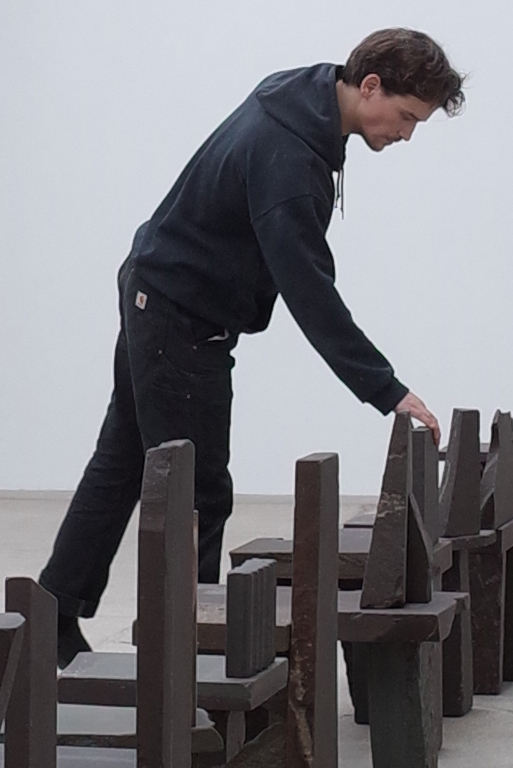
The essence of materials is constantly sought in the work of the German designer Carsten in der Elst (b. 1992 Düsseldorf). Based in Cologne, he finished his Design studies in 2020 and immediately started his studio practice by continuing his graduation project Heavy Duty. His work focuses on making materials hybrid using industrial by products. Through physical labor and obsessive attention to detail, he connects with the material, transforming the discarded pieces into unique and beautiul shapes, allowing the materials to behave differently. The material dictates the design.
For his first project, Heavy Duty, the designer recalled how the squander of energy and natural materials dedicated to industrial processes mostly serve to end up producing waste matter. Through traditional craftsmanship and his zero-waste approach, he approached materials such as forged steel and shotcrete and returned them to their own universe. Soft Works was a continuation of his first project, using the same concept but different elements, such as cork, silicone and leftover mattresses. In der Elst is dedicated to finding the locations and origins of materials, in order to tame them whilst preserving their essence and natural processes.
His work reminds us that there is beauty in components that have been considered less worthy and condemned to decay, beliving they deserve investigation. A essentail part of in der Elst’s practice is the documentation of the creative process, or his communication and findings with the materials. For the designer, the material guides the making process, instead of being subservient to an idea, he considers himself a servant of the materials. His constant question: does this design decision do justice to the nature of the material, or does it become torture?
Both projects have been exhibited at the 3 Days of Design festival in Copenhagen. Now, the designer is focusing on his Graywacke Offcut project, for which he has recovered the rubble from a quarry, creating a series in which each piece is embodied with the same Graywacke stone, but finds its own personality, through form and structure.
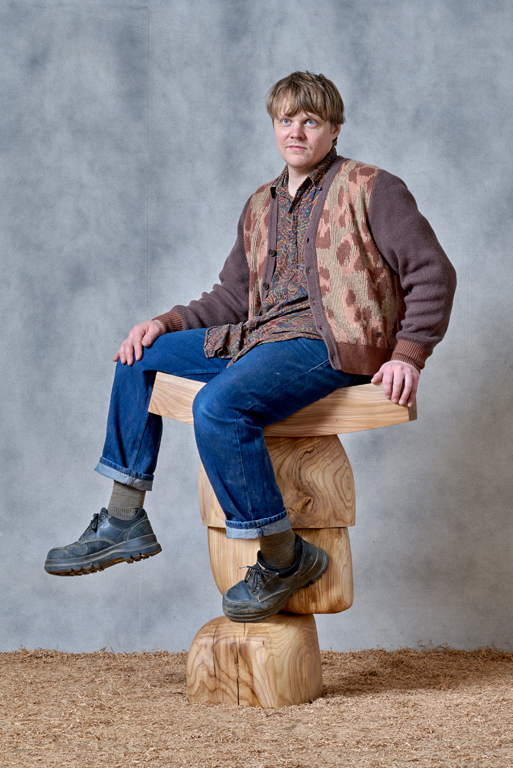
Finnish-born designer Jonas Lutz creates objects of bold simplicity and elegant solutions, often with a tacit playfulness. His objects instantly reveal a continuous search for the novel and undiscovered. Simplicity of form is well balanced with a gentleness that invites a desire to touch. Lutz’s furniture has always been of modest form, projecting a deep comprehension of his materials, and an elevation of their qualities.
The designer finds inspiration in Nordic furniture traditions as well as in the lively design culture of his adopted country of the Netherlands. Fuelled by an upbringing in a creative milieu his instinct and sensibility to materials intimates that of a sculptor’s act. This act is much replicated in the way he gives himself design briefs triggering investigations of materials and concepts, often inspired by objects of use in his home.
Lutz works with manufacturers E15, Form & Refine, La Chance and fashion label Isabel Marant. His studio is located in Rotterdam, the Netherlands and he studied at the Carl Malmsten furniture school in Stockholm, Sweden, and has a bachelor in design from the Design Academy in Eindhoven, the Netherlands.

Francisco Jaramillo (b. Medellin) is an award-winning Colombian designer who turns to local materials for his furniture, resulting in pieces that are uniquely Colombian. In collaborating with local artisans and imparting his knowledge of process and material through teaching, he has helped shape a design culture that does not derive its methods solely from Western or international influences.
Growing up in Medellín, Jaramillo was always looking to the sky to derive shapes from cloud forms, and today, his design continues to be inspired by his surroundings, turning to local materials rooted in place. After finishing his university studies, the designer traveled to Barcelona to specialize in furniture design at ELISAVA, working with designers who influenced his work with local materials. Upon returning home to Colombia, he launched Fango, which explores the relationship between man, context, and object, combining technology with artisanship to craft collectible furniture driven by a clear narrative.
As a result of his close work with artisans, Jaramillo began studying local materials, developing the Ibuju collection, which rethinks the design and manufacturing of native wooden pieces using a natural, renewable fiber called “Yaré”. The Ibuju stool earned Jaramillo a 2023 Wallpaper* Design Award in the “Best New Weaves” category. The designer has also participated in design weeks around the world, including Dutch Design Week, Wanted Design, Abierto Mexicano de Diseño, and Medellin Design Week.

Johan Viladrich is a designer born in Paris in 1991, who graduated from the Design Academy Eindhoven. Currently based in Montpellier, His work is centered on the design of furniture and spatial structures. Viladrich uses and reconfigures the signs of standardization into objects and installations. His purpose is to design clean structures in which details and connections become intrinsic parts of a whole. Viladrich seeks to explore industrial materials to reveal their inherent beauty through refined surface treatments. Through steel, aluminum and fiberglass he investigates the physical nature of objects and their relationship with the contexts they are extracted from. Both functional and sculptural, his work borrows elements from industrial culture, mass consumption and common everyday scenes such as the waiting room or the highway stop.
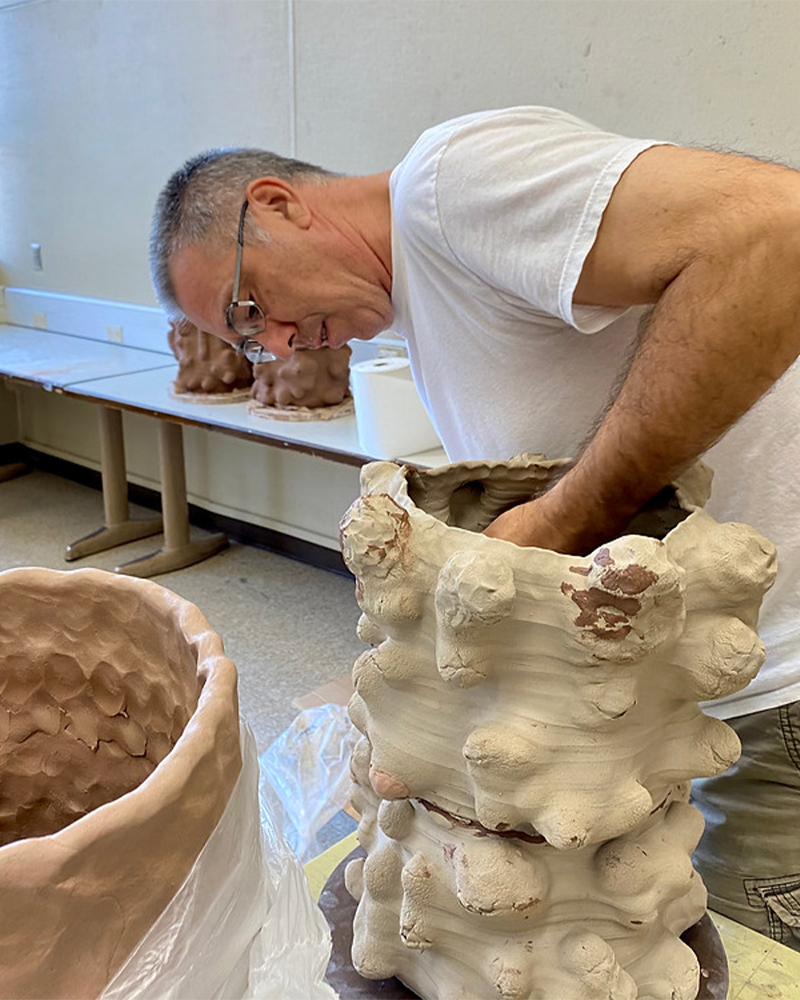
Vince Palacios (b.1961) is an American ceramic artist born in Flint, Michigan. He received his Masters in Ceramic Art from the New York State College of Ceramics at Alfred University in 1994, and prior to that, in 1992, his BFA in ceramics at California State University at Long Beach. He has been working in the field of ceramic art since 1988.
Palacios has gathered extensive experience as a professor at different academic institutions, such as California State University of Long Beach and Western Illinois University, among others. He is now working as a lecturer in the Ceramics Department at El Camino College in Torrance, California.
His work has been exhibited worldwide and is included in a number of important private collections such as Alfred University Art Museum in New York as well as in the collections of remarkable museums, including the Long Beach Museum of Art, Long beach, California, and The AMOCA Museum of Ceramic Art in Pomona, California.
The development of Palacios' works is derived from unique approach points. Firstly, in the context of materiality, Palacio’s has a complex crafting process through the use of raw glass and ceramic materials. As a result of his multiplex material process, combined with the exploration of geological processes of pyroclastic interactions, heat and chemical reactions, the American ceramicist creates intricate and playful narratives.
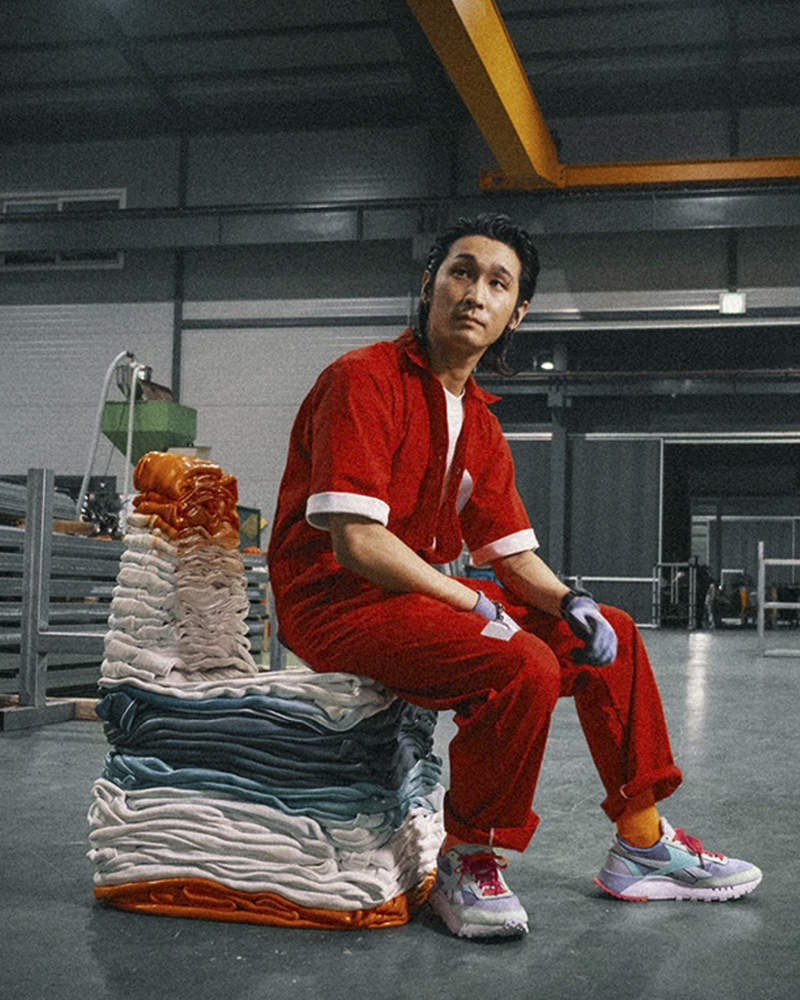
Youngmin Kang (born 1969 in Seoul, South Korea) studied painting (BFA/MFA) at Seoul National University and studio art (MFA) at the University of Texas at Austin. He has shown his work in solo shows at Gana Contemporary, Space CAN, Youngeun Museum of Contemporary Art, Project Space Sarubia, all South Korea and O’Kane Gallery, Houston. Group exhibitions include National Museum of Modern and Contemporary Art, Seoul Museum of Art, Reverscape, Jeju Museum of Art, Seoul International Photography Festival, and Gyeonggido Museum of Art, all South Korea.
Youngmin Kang transforms images and objects captured from digital media, architecture or cultural phenomenon into different contexts by expanding the limits of a particular media through changing the format of the information contained within. When modified into a different space, dimension, scale, and media, his provides a moment of clarity about the original medium and references. Specific meaning in each work emerges through the detailed process of manipulation and can be associated with cultural, socio-political, and identity issues.
The designer uses his designs to demonstrate how the garbage we generate can be turned into something of great value. He is writing his legacy by pushing the limits of design and giving objects a new life. As a member of the Seoul-based collective 1S1T, Kang is changing our view of what we think is just trash. In his opinion, he not only creates objects full of beauty, but also things that are representative of his generation.

Embracing craft in the digital age, Rollo Bryant (b.1996, UK) specializes in working techniques that merge freehand sculpting with computational software. Focused on projects that create positive environmental change, while promoting the idea that even with this new challenge, design can still be as appealing and versatile, if not more so.
With a distinct focus on material and lighting innovation, Rollo’s goal is to create works that change perception, invite intrigue and raise poignant topical discussion. His fascination with naturally formed organic structures has led to an aesthetic identity of similar character and taste.
Optimistic about design intervention as a means to address ecological neglect, Rollo’s most recent project ‘Urban Stem’, attempts to bring this conversation into the spotlight, by imagining a future where we are brought closer to the biosphere. Highlighting a number of key problems with the ways we light our cities, the project explores ideas to mitigate our impact and prioritize an alternate agenda for urban design.
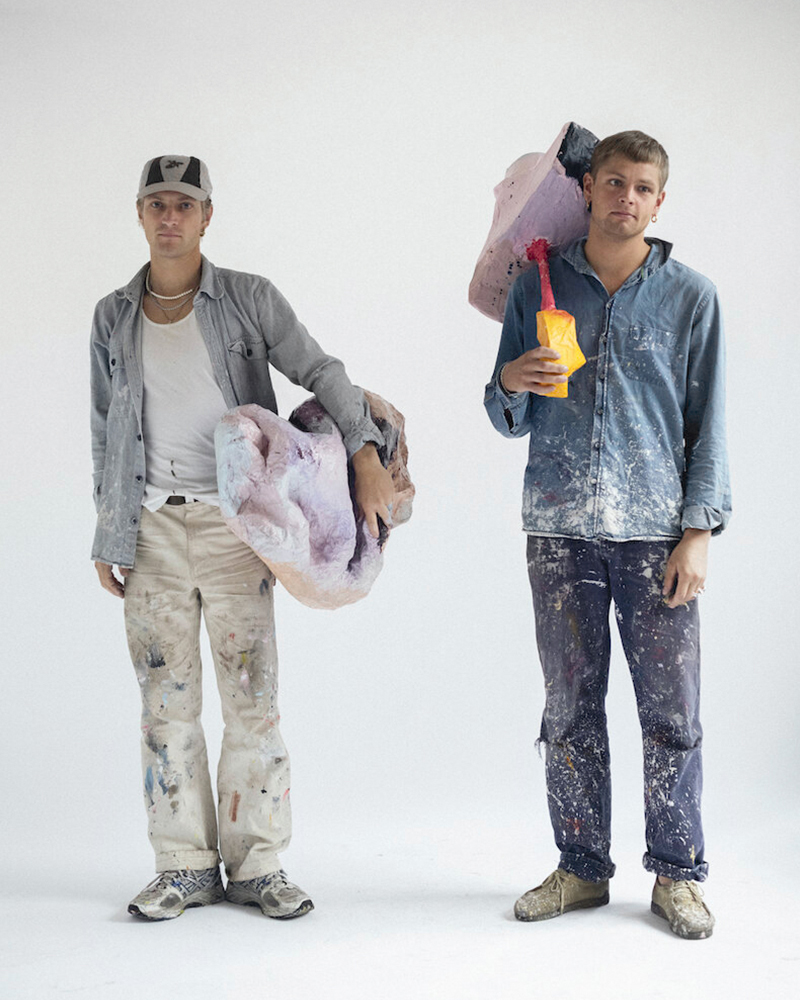
The creative duo of Frederik Nystrup-Larsen (b.1992 Copenhagen) and Oliver Sundqvist (b.1991 Copenhagen) has proven to be a partnership that continuously questions the current state of contemporary art. The pair have reinterpreted the processes of consumerism, illustrating critique on overconsumption and poor manufacturing through working in the field of art and design.
Intellectually and physically dependent on regular variation and change, 'Mater' (meaning mother in Latin), the first collective project between Oliver and Frederik, was a vase created as a Christmas present for their mother. Norma, a Copenhagen restaurant that is often referred to as the best restaurant in the world, used the vase. Since 'Mater,' the duo have continued focusing on creating unique and collectible objects, with a central focus on longevity. The pair seek to ignite a feeling of responsibility in people through the creations of thoughtful and sustainable pieces. A lot of their work questions the surrounding world. Inspired by characters who challenge established understandings of and structures within this world, the duo look towards multiple disciplines to fuel their creativity.
Their process is as equally important as the final product. Inspired by beauty and decay, Oliver and Frederik's creative process is split into phases - initially, they spend a lot of time reflecting, not stressing about it, and being slow, taking actions that do not relate to the project or practice. The following phase, the physical execution of the idea, is built on intuition and (often an unhealthy) tempo. The duo thrives off the flow of stress, allowing their brains to work on autopilot while creating.
The designers split their time between Copenhagen and London and have exhibited at Art Basel and at two solo shows before they had even finished school.
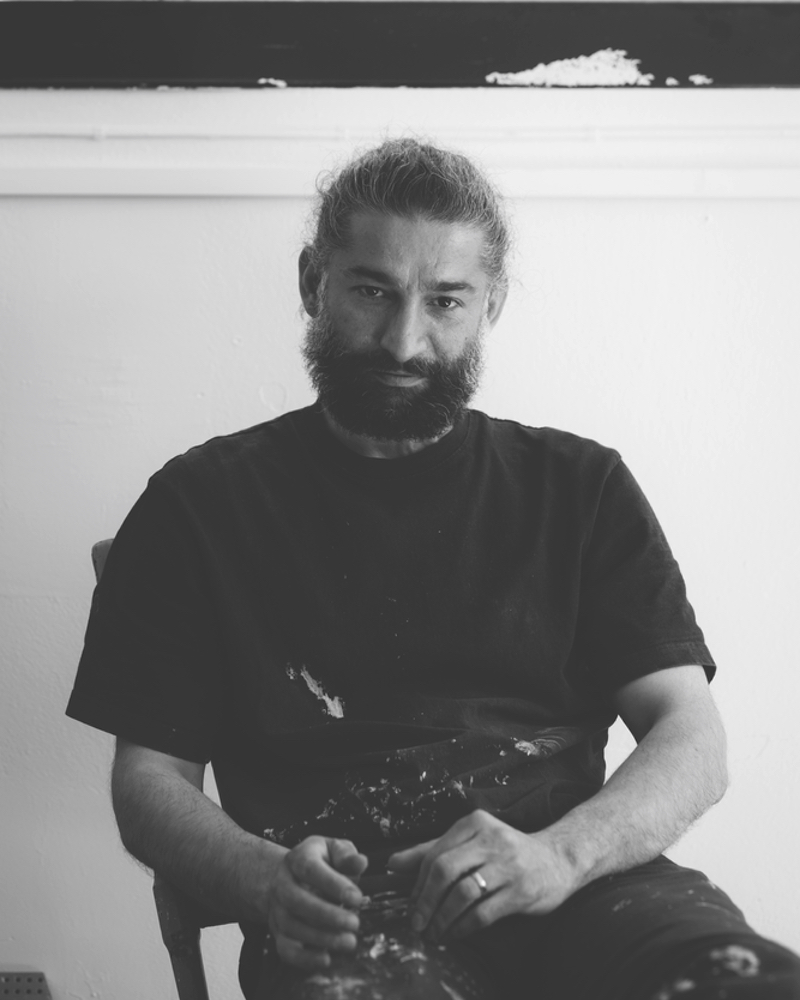
Nebil Zaman (b.1985) is a Kurdish / Norwegian designer living and working in Oslo. After beginning his studies in Art direction and advertising, Zaman took a turn and went to study traditional woodworking and furniture design at the Oslo National Academy of the Arts. Since graduating Zaman has merged furniture making with his fascination and interest in architecture, art and technology. Based on his upbringing and experiences, he explores how our surroundings affect us socially and culturally. His interest in materials, production techniques and visual languages shine through in his work, investigating topics such as function, form, identity and visual culture.
His latest series of laser cut plaster cast MDF furniture forms, place an emphasis on material and texture. Zaman is most intrigued by the materiality of plaster, it provides a sense of freedom, and a loss of control in the final outcome. While there is extreme precision in the digital fabrication techniques to create the armature, the addition of plaster to the process provides an organic element of expression and randomness.
The new collection of works made exclusively for Side Gallery, is a continuation of Nebil Zaman's previous works in plaster, exploring topics such as function, form, identity and visual culture. The scope of his creative process focuses on the combination of digital fabrication and handcraft methods. Zaman digitally draws or searches for 3D models that interest him. Once the designer is satisfied with the model, he sections the design in 2D, then laser cuts or CNC mills the 2D sections to create the parts, afterwards assembling the newly made pieces into a three dimensional object. The structural base then acts as a fixture to build up thin layers of regular plaster and wood glue, leaving the finished object with a smooth industrial finish.
Zaman explores forms and different typologies of furniture, as well as imagining and creating new ones. Certain pieces have clear and specific functions, while others are more ambiguous and open to another possible purpose. The formal language and aesthetics of Zaman’s designs stem from a fascination with ancient civilizations, archaeological encounters, science fiction and futuristic visions. The Norwegian designer won the ‘DOGA Award for Newcomers’ in 2017, and his project ‘Personal Space’ was acquired by Norway’s National Museum in 2019. In 2022 the designer presented work at London Craft as well as being selected for the group show “Matter” Norwegian Presence durning Salone di Mobile.

Charlotte Kingsnorth makes work that welds functionality with sculpture. There are no limitations in terms of scale, material or process, instead her work embraces a marriage of industrial and artisan techniques, often weaving in pre-existing objects. She is interested in anthropomorphic forms and carves personality into the materials she uses.
Kingsnorth is a graduate of the Royal College of Art's design products programme and runs a London-based practice, working with private clients, galleries, brands and global institutions, including The Bill Gates Foundation, Fendi, ByFar, SHOWstudio, Saatchi, Christies, The Crafts Council, The V&A, Holon Design Museum in Israel, the Triennale Design Museum in Milan. She has shown in design fairs at Nomad in Monaco, St. Moritz and Capri, Design Miami, New York, London, Paris and Milan, and has works in the permanent collection at Turkey's Odunpazari Modern Museum.
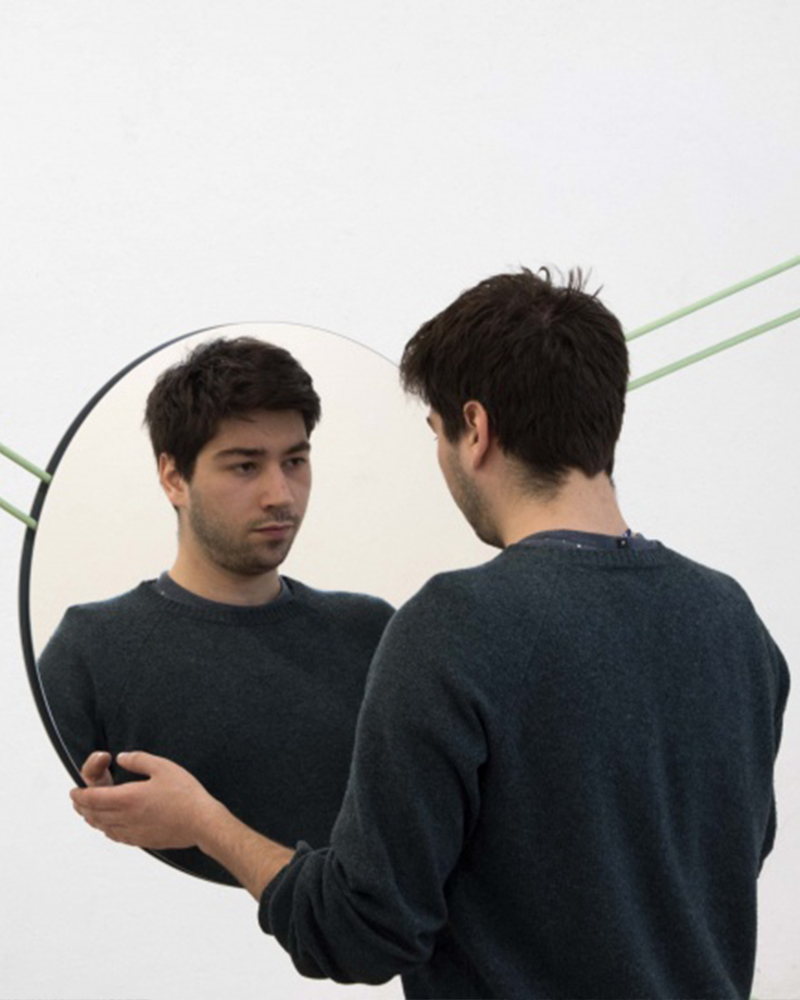
Lukas Saint-Joigny is an experimental designer based in Paris. He graduated with a MA in Contextual Design at the Design Academy Eindhoven in 2018. He has an experimental way of making objects based on an exploration of shapes and materials.
His hands-on process enables him to deal with color and texture to create intriguing objects that communicate with the user and push him to reflect on the world surrounding us. Greatly inspired by science fiction, comics, and sciences such as geology and biology, he doesn't follow the archetypes of objects but tries to stimulate the imagination. He intends to focus on the research of a new aesthetic based on the unexpected and the strange.
Since graduating, he has produced his Ore Collection, a series of domestic objects that evoke ore minerals. Through experimental organic shapes and vibrant colors, his objects look alive. The collection reflects his cosmic influences, creating a dynamic aspect portrayed through the forms and their texture, taking the viewer into a fantasy, forcing the imagination. Side Gallery first showed the collection at the Collectible Design fair and then in the gallery's summer exhibition space Casavells.
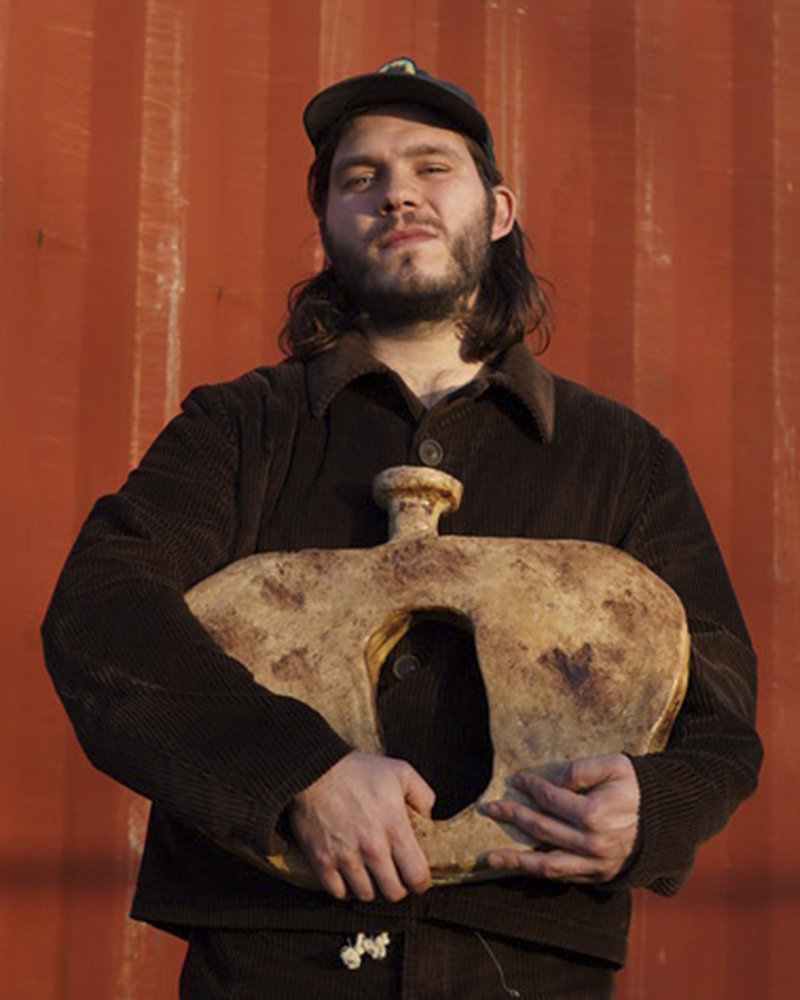
Willem van Hooff (b. 1992, Holland) sees himself as a modern craftsman. After graduating from the Design Academy in Eindhoven in 2018, he opened a design studio in Eindhoven. He achieves a raw style by availing of primitive techniques. He often works with traditional machinery, methods, and existing products. His work breaths a new, exciting life into traditional materials.
Van Hoof's ethos maintains that modern production lacks soul, something which Van Hoof is passionate about. The craftsman believes that the coronavirus pandemic has uncovered people's appreciation of the smaller things in life.